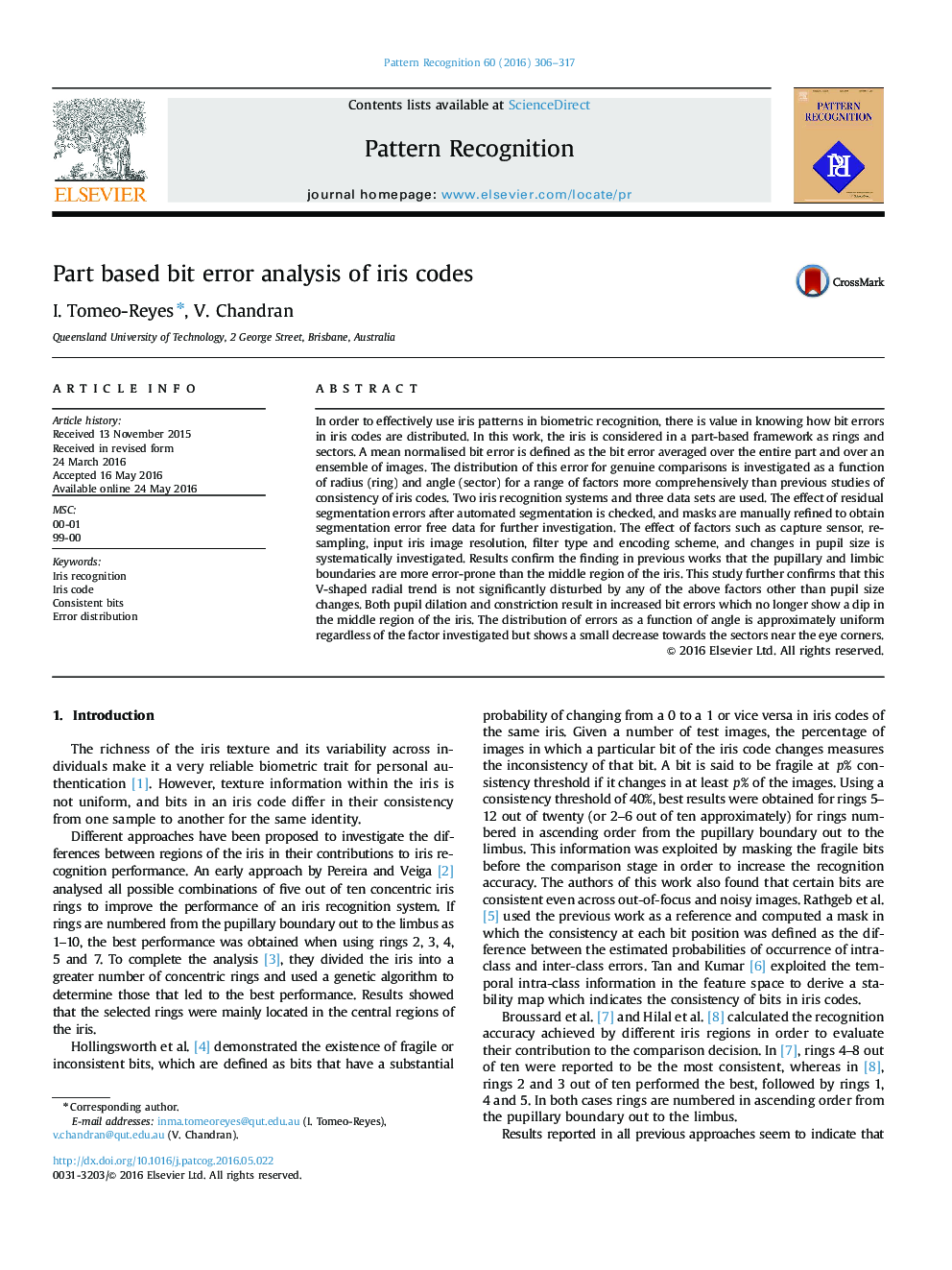| کد مقاله | کد نشریه | سال انتشار | مقاله انگلیسی | نسخه تمام متن |
|---|---|---|---|---|
| 531773 | 869876 | 2016 | 12 صفحه PDF | دانلود رایگان |
• Middle rings of the iris are more consistent than rings close to the pupil or limbus.
• Bit errors are uniform over different sectors if segmentation errors are eliminated.
• Iris code bit errors show the same trends for 3 databases and 3 recognition systems.
• Pupil size changes, resolution and angular resampling affect the bit errors most.
In order to effectively use iris patterns in biometric recognition, there is value in knowing how bit errors in iris codes are distributed. In this work, the iris is considered in a part-based framework as rings and sectors. A mean normalised bit error is defined as the bit error averaged over the entire part and over an ensemble of images. The distribution of this error for genuine comparisons is investigated as a function of radius (ring) and angle (sector) for a range of factors more comprehensively than previous studies of consistency of iris codes. Two iris recognition systems and three data sets are used. The effect of residual segmentation errors after automated segmentation is checked, and masks are manually refined to obtain segmentation error free data for further investigation. The effect of factors such as capture sensor, resampling, input iris image resolution, filter type and encoding scheme, and changes in pupil size is systematically investigated. Results confirm the finding in previous works that the pupillary and limbic boundaries are more error-prone than the middle region of the iris. This study further confirms that this V-shaped radial trend is not significantly disturbed by any of the above factors other than pupil size changes. Both pupil dilation and constriction result in increased bit errors which no longer show a dip in the middle region of the iris. The distribution of errors as a function of angle is approximately uniform regardless of the factor investigated but shows a small decrease towards the sectors near the eye corners.
Journal: Pattern Recognition - Volume 60, December 2016, Pages 306–317
